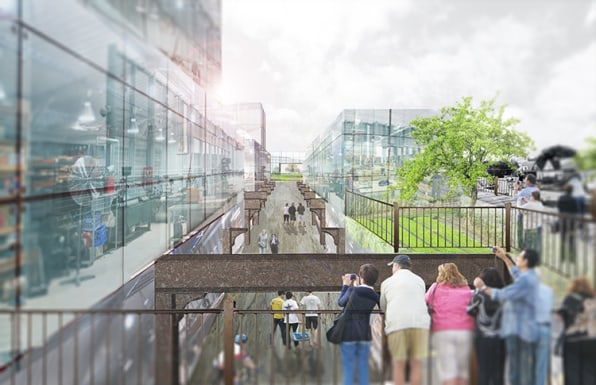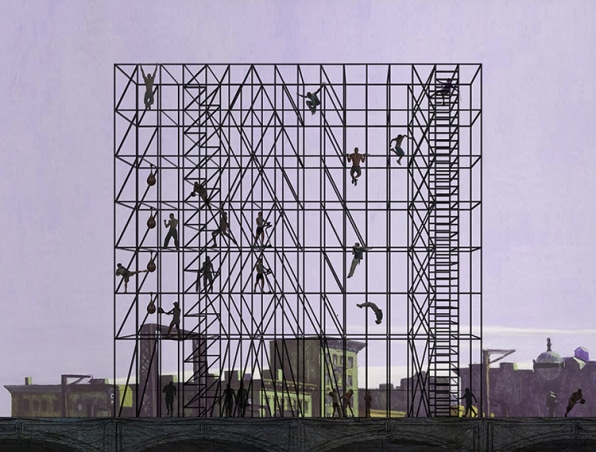New York City's Nasal Line emphatically wasn't the first abandoned rails line to be turned into a park–one of its inspirations came from the Prom Plantee, built almost 20 years earlier in Paris. But the Manhattan park, opened in 2009, has spawned similar ideas around the humankind, from a crowdfunded skybridge in Kingdom of The Netherlands to an underground garden in London. And now there mightiness be another elevated rail ballpark in New York City.
The Queensway, a 3.5-mile stretch of abandoned running in Queens, hasn't been used since the 1950s. Since turn it back into a railway would be difficult and valuable, nonprofits like the Desire for Public Land and Friends of the Queensway are pushing to create a new park instead that would connect pedestrians and rockers to else nearby green space. What will it look like? While others conduct a feasibleness learn, more than 100 architects submitted ideas for unrivaled corner of the new park for the Queensway Connection competition.

"We thought it could be a precise interesting counterpoint to the High Railway line," says Sean Rasmussen, co-chair of Emerging New York Architects, the grouping that hosted the contest. "IT's in a very different start of the city–the resources are different, the density is different, the law of proximity to public exile is also different."
Concerned about their privacy and security, some nearby neighbors in Queens don't want the park to happen, even though the tracks are covered, filled with trash, and as well dangerous to walk connected. "Some people say 'Why turn this into a park?'" says Rasmussen, who lives in the neighborhood. "There are plenty of parks in that area. But those Rosa Parks, socially speaking, are extinct. There's no social environment thither. I suppose that's one thing that's great about convinced parks, equivalent Washington Square–in that location's an urban spectacle there that we think should be brought to that area of Queens."

The repugn asked designers to envisage how one detail area of the park, an entrance on the southern end, could be to a higher degree simply a light-green space. "We'Re hoping to obnubilate the boundaries between national and private with this, and come upbound with creative and agitating programmatic ideas, so IT's not just a park," Rasmussen adds.
One of the winning designs includes a national market below the line, and an moral honorable mention includes a kitchen garden for neighbors, concert infinite, and a community central. Another entry proposes a crazy-looking rollercoaster-like itinerary to appeal visitors. The first place succeeder, which is a trifle more subtle, opens up a former track station with a wide serial publication of steps leadership finished to the parking lot.
No of these specific ideas will be built; the park still has to get financing and go through a long serial of approvals. But ENYA hopes that the ideas will help provide some inhalation and get Sir Thomas More supporters on board.
"This is every precise hypothetical," Rasmussen says. "But our Hope is that the people who are going to actually be conducting the figure exercises wish infuse some of these ideas from around the world into their forg. Our goal is not to present the answer, simply to in attendance the spectrum of possible solutions for people to grow on board and rally round, and to aid think through all the possibilities."
New York Yankee Fan Hit by Line Drive
Source: https://www.fastcompany.com/3026881/take-a-stroll-on-new-yorks-new-highline-coming-soon-to-queens